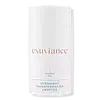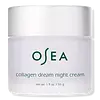What's inside
What's inside
 Key Ingredients
Key Ingredients

 Benefits
Benefits

 Concerns
Concerns

 Ingredients Side-by-side
Ingredients Side-by-side

Water
Skin ConditioningGluconolactone
Skin ConditioningC12-15 Alkyl Benzoate
AntimicrobialPropylene Glycol
HumectantC13-15 Alkane
SolventPEG-100 Stearate
Lactobionic Acid
BufferingGlycerin
HumectantC12-15 Alkyl Ethylhexanoate
EmollientOctyldodecyl Myristate
EmollientDimethicone
EmollientCetearyl Alcohol
EmollientGlyceryl Stearate
EmollientEthoxydiglycol
HumectantPalmitic Acid
EmollientHydrogenated Vegetable Oil
EmollientStearic Acid
CleansingButylene Glycol
HumectantTocopheryl Acetate
AntioxidantRetinyl Palmitate
Skin ConditioningAscorbyl Palmitate
AntioxidantGlycyrrhiza Glabra Root Extract
BleachingAnthemis Nobilis Flower Extract
MaskingLeuconostoc/Radish Root Ferment Filtrate
AntimicrobialLaminaria Saccharina Extract
Skin ProtectingCalendula Officinalis Flower Extract
MaskingEchinacea Purpurea Extract
MoisturisingHydrogenated Lecithin
EmulsifyingPhospholipids
Skin ConditioningHydrogenated Coco-Glycerides
EmollientSodium Hyaluronate
HumectantHelianthus Annuus Seed Extract
Skin ConditioningCaprylic/Capric/Myristic/Stearic Triglyceride
EmollientPhosphatidylcholine
EmulsifyingOctyldodecanol
EmollientMyristic Acid
CleansingCeteareth-20
CleansingSteareth-2
EmulsifyingPolyacrylamide
C13-14 Isoparaffin
EmollientSodium Hydroxide
BufferingLaureth-7
EmulsifyingMagnesium Aluminum Silicate
AbsorbentCaprylyl Glycol
EmollientXanthan Gum
EmulsifyingDisodium EDTA
Disteareth-100 Ipdi
Phenoxyethanol
PreservativeChlorphenesin
AntimicrobialParfum
MaskingHexyl Cinnamal
PerfumingBlue 1 Lake
Cosmetic ColorantCI 19140
Cosmetic ColorantWater, Gluconolactone, C12-15 Alkyl Benzoate, Propylene Glycol, C13-15 Alkane, PEG-100 Stearate, Lactobionic Acid, Glycerin, C12-15 Alkyl Ethylhexanoate, Octyldodecyl Myristate, Dimethicone, Cetearyl Alcohol, Glyceryl Stearate, Ethoxydiglycol, Palmitic Acid, Hydrogenated Vegetable Oil, Stearic Acid, Butylene Glycol, Tocopheryl Acetate, Retinyl Palmitate, Ascorbyl Palmitate, Glycyrrhiza Glabra Root Extract, Anthemis Nobilis Flower Extract, Leuconostoc/Radish Root Ferment Filtrate, Laminaria Saccharina Extract, Calendula Officinalis Flower Extract, Echinacea Purpurea Extract, Hydrogenated Lecithin, Phospholipids, Hydrogenated Coco-Glycerides, Sodium Hyaluronate, Helianthus Annuus Seed Extract, Caprylic/Capric/Myristic/Stearic Triglyceride, Phosphatidylcholine, Octyldodecanol, Myristic Acid, Ceteareth-20, Steareth-2, Polyacrylamide, C13-14 Isoparaffin, Sodium Hydroxide, Laureth-7, Magnesium Aluminum Silicate, Caprylyl Glycol, Xanthan Gum, Disodium EDTA, Disteareth-100 Ipdi, Phenoxyethanol, Chlorphenesin, Parfum, Hexyl Cinnamal, Blue 1 Lake, CI 19140
Water
Skin ConditioningButyrospermum Parkii Butter
Skin ConditioningGlycerin
HumectantCoco-Caprylate/Caprate
EmollientDiheptyl Succinate
EmollientPropanediol
SolventCapryloyl Glycerin/Sebacic Acid Copolymer
Skin ConditioningCetearyl Olivate
Squalane
EmollientCetyl Stearate
EmollientHydrogenated Starch Hydrolysate
HumectantMacadamia Ternifolia Seed Oil
EmollientSorbitan Olivate
EmulsifyingBehenyl Alcohol
EmollientCarthamus Tinctorius Seed Oil
MaskingMyristyl Myristate
EmollientAphanizomenon Flos-Aquae Extract
HumectantCocoyl Hydrolyzed Collagen
CleansingAvena Sativa Kernel Flour
AbrasiveAndrographis Paniculata Leaf Extract
AstringentCistus Incanus Flower/Leaf/Stem Extract
Skin ConditioningLavandula Hybrida Extract
EmollientTriheptanoin
Skin ConditioningOryza Sativa Bran Extract
Skin ConditioningRosmarinus Officinalis Leaf Extract
AntimicrobialHelianthus Annuus Extract
EmollientTocopherol
AntioxidantMusa Sapientum Fruit Extract
Skin ConditioningHedera Helix Extract
AntimicrobialZiziphus Jujuba Fruit Extract
Skin ConditioningMelia Azadirachta Flower Extract
Skin ConditioningCoccinia Indica Fruit Extract
Skin ConditioningLavandula Angustifolia Oil
MaskingSodium Hydroxide
BufferingPotassium Sorbate
PreservativeCaprylhydroxamic Acid
Citric Acid
BufferingTrisodium Ethylenediamine Disuccinate
Xanthan Gum
Emulsifying1,2-Hexanediol
Skin ConditioningPhenoxyethanol
PreservativePhenylpropanol
MaskingParfum
MaskingLinalool
PerfumingLimonene
PerfumingCitral
PerfumingGeraniol
PerfumingWater, Butyrospermum Parkii Butter, Glycerin, Coco-Caprylate/Caprate, Diheptyl Succinate, Propanediol, Capryloyl Glycerin/Sebacic Acid Copolymer, Cetearyl Olivate, Squalane, Cetyl Stearate, Hydrogenated Starch Hydrolysate, Macadamia Ternifolia Seed Oil, Sorbitan Olivate, Behenyl Alcohol, Carthamus Tinctorius Seed Oil, Myristyl Myristate, Aphanizomenon Flos-Aquae Extract, Cocoyl Hydrolyzed Collagen, Avena Sativa Kernel Flour, Andrographis Paniculata Leaf Extract, Cistus Incanus Flower/Leaf/Stem Extract, Lavandula Hybrida Extract, Triheptanoin, Oryza Sativa Bran Extract, Rosmarinus Officinalis Leaf Extract, Helianthus Annuus Extract, Tocopherol, Musa Sapientum Fruit Extract, Hedera Helix Extract, Ziziphus Jujuba Fruit Extract, Melia Azadirachta Flower Extract, Coccinia Indica Fruit Extract, Lavandula Angustifolia Oil, Sodium Hydroxide, Potassium Sorbate, Caprylhydroxamic Acid, Citric Acid, Trisodium Ethylenediamine Disuccinate, Xanthan Gum, 1,2-Hexanediol, Phenoxyethanol, Phenylpropanol, Parfum, Linalool, Limonene, Citral, Geraniol
Alternatives
Ingredients Explained
These ingredients are found in both products.
Ingredients higher up in an ingredient list are typically present in a larger amount.
Glycerin is already naturally found in your skin. It helps moisturize and protect your skin.
A study from 2016 found glycerin to be more effective as a humectant than AHAs and hyaluronic acid.
As a humectant, it helps the skin stay hydrated by pulling moisture to your skin. The low molecular weight of glycerin allows it to pull moisture into the deeper layers of your skin.
Hydrated skin improves your skin barrier; Your skin barrier helps protect against irritants and bacteria.
Glycerin has also been found to have antimicrobial and antiviral properties. Due to these properties, glycerin is often used in wound and burn treatments.
In cosmetics, glycerin is usually derived from plants such as soybean or palm. However, it can also be sourced from animals, such as tallow or animal fat.
This ingredient is organic, colorless, odorless, and non-toxic.
Glycerin is the name for this ingredient in American English. British English uses Glycerol/Glycerine.
Learn more about GlycerinParfum is a catch-all term for an ingredient or more that is used to give a scent to products.
Also called "fragrance", this ingredient can be a blend of hundreds of chemicals or plant oils. This means every product with "fragrance" or "parfum" in the ingredients list is a different mixture.
For instance, Habanolide is a proprietary trade name for a specific aroma chemical. When used as a fragrance ingredient in cosmetics, most aroma chemicals fall under the broad labeling category of “FRAGRANCE” or “PARFUM” according to EU and US regulations.
The term 'parfum' or 'fragrance' is not regulated in many countries. In many cases, it is up to the brand to define this term.
For instance, many brands choose to label themselves as "fragrance-free" because they are not using synthetic fragrances. However, their products may still contain ingredients such as essential oils that are considered a fragrance by INCI standards.
One example is Calendula flower extract. Calendula is an essential oil that still imparts a scent or 'fragrance'.
Depending on the blend, the ingredients in the mixture can cause allergies and sensitivities on the skin. Some ingredients that are known EU allergens include linalool and citronellol.
Parfum can also be used to mask or cover an unpleasant scent.
The bottom line is: not all fragrances/parfum/ingredients are created equally. If you are worried about fragrances, we recommend taking a closer look at an ingredient. And of course, we always recommend speaking with a professional.
Learn more about ParfumPhenoxyethanol is a preservative that has germicide, antimicrobial, and aromatic properties. Studies show that phenoxyethanol can prevent microbial growth. By itself, it has a scent that is similar to that of a rose.
It's often used in formulations along with Caprylyl Glycol to preserve the shelf life of products.
Sodium Hydroxide is also known as lye or caustic soda. It is used to adjust the pH of products; many ingredients require a specific pH to be effective.
In small amounts, sodium hydroxide is considered safe to use. However, large amounts may cause chemical burns due to its high alkaline.
Your skin has a natural pH and acid mantle. This acid mantle helps prevent harmful bacteria from breaking through. The acid mantle also helps keep your skin hydrated.
"Alkaline" refers to a high pH level. A low pH level would be considered acidic.
Learn more about Sodium HydroxideWater. It's the most common cosmetic ingredient of all. You'll usually see it at the top of ingredient lists, meaning that it makes up the largest part of the product.
So why is it so popular? Water most often acts as a solvent - this means that it helps dissolve other ingredients into the formulation.
You'll also recognize water as that liquid we all need to stay alive. If you see this, drink a glass of water. Stay hydrated!
Learn more about WaterXanthan gum is used as a stabilizer and thickener within cosmetic products. It helps give products a sticky, thick feeling - preventing them from being too runny.
On the technical side of things, xanthan gum is a polysaccharide - a combination consisting of multiple sugar molecules bonded together.
Xanthan gum is a pretty common and great ingredient. It is a natural, non-toxic, non-irritating ingredient that is also commonly used in food products.
Learn more about Xanthan Gum